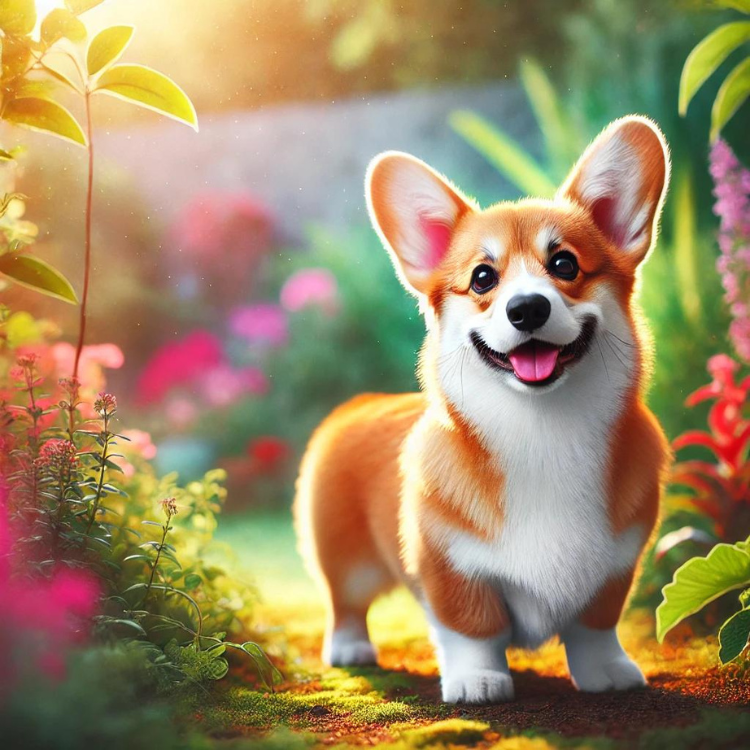Introduction to Corgi Dogs: The Royal Canine Companion

Introduction
Meet the Corgi dog, a small but mighty breed known for its adorable short legs, expressive face, and cheerful personality. Originally from Wales, Corgis have a rich history as herding dogs and have captured the hearts of many, including the British royal family.
Breed History
Corgis come in two main varieties: Pembroke Welsh Corgis and Cardigan Welsh Corgis. The Pembroke, recognized by its docked tail, gained popularity thanks to Queen Elizabeth II, who has owned more than 30 Pembroke Corgis over her lifetime. The Cardigan, on the other hand, has a long tail and is slightly larger. Both types share a common ancestry and were originally bred to herd cattle and sheep.
Physical Characteristics
Corgis are small yet sturdy dogs with distinctive features:
- Legs and Body: Their most recognizable traits are their short legs and elongated bodies, giving them a unique, charming appearance.
- Ears and Face: They have erect, large ears and a fox-like face full of expression.
- Size: Pembroke Welsh Corgis typically weigh between 25-30 pounds, while Cardigans are slightly heavier, weighing between 30-38 pounds. The iconic “Corgi butt” is a feature adored by many.
Temperament
Corgis are known for their bright, outgoing, and playful nature:
- Trainability: They are intelligent and highly trainable, though their independent streak can sometimes make training a bit challenging.
- Loyalty: They are loyal and affectionate, making them great companions for families and individuals alike.
- Herding Instinct: Their herding background means they might try to herd other pets or even children, which can be quite amusing!
Exercise Needs
Despite their small size, Corgis are energetic dogs that require regular exercise:
- Daily Activity: They need daily walks, playtime, and mental stimulation to stay happy and healthy.
- Engaging Activities: Corgis excel in agility and herding events and love activities that engage both their minds and bodies. Interactive toys and puzzle feeders can help keep them entertained.
- Puppy Energy: Corgi puppies especially need plenty of exercise to channel their abundant energy.
Corgi vs. Other Herding Dogs
While Corgis share some herding traits with breeds like Border Collies and Australian Shepherds, their small size and distinctive body shape set them apart:
- Size and Function: Unlike larger herding breeds, Corgis were bred to work with cattle by nipping at their heels and avoiding kicks with their low stature.
Fun Facts
- Royal Connection: Queen Elizabeth II’s fondness for Pembroke Corgis has significantly boosted their popularity worldwide.
- Vocal Nature: Corgis are quite vocal and will bark to alert their owners of any unusual activity.
- Adorable Waddle: Their short legs give them a characteristic waddle, making them even more endearing.
- Corgis with Tails: While Pembroke Welsh Corgis are typically known for their docked tails, some are born with tails and are just as adorable and lovable.
Conclusion
Corgis are delightful dogs that bring joy and laughter to any household. Their unique appearance, combined with their loving and spirited nature, makes them a beloved breed among dog enthusiasts. If you’re looking for a companion that’s full of personality and charm, the Corgi might just be the perfect fit for you. From their historical roots in Wales to their royal connections, Corgis are a breed with much to offer. Whether you’re interested in enjoying the company of Corgi puppies or simply admiring the famous Corgi butt, these dogs are sure to capture your heart.
Want to gain a deeper understanding of dog behavior and how to care for them? Click the link below to read more related articles. read more related articles
Looking for products for your cat or dog? Check out the articles linked below for more information and recommendations. Explore more articles